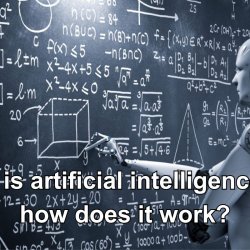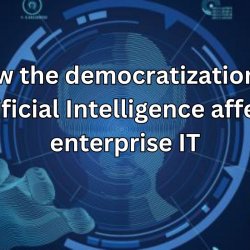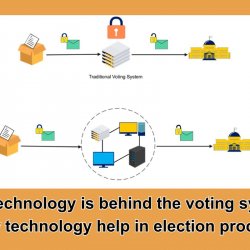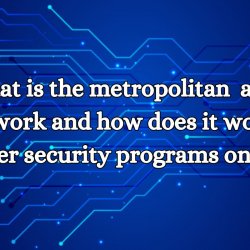How much does it cost to train GPT-3 models?


How much does it cost to train GPT-3 models?
Introduction
Welcome to our blog section where we will be diving into the fascinating world of GPT3 (Generative Pretrained Transformer) . This state of the art natural language processing model has been making waves in the tech community since its release by OpenAI in 2020. In this blog, we will be exploring one of the most commonly asked questions about GPT3: how much does it cost to train these models?
But first, let’s understand what exactly GPT3 is. GPT3 is a text generating AI model that uses deep learning algorithms to produce human-like text. It has been trained on an incredibly large dataset of over 45TB , making it one of the largest language models in existence. This massive amount of data includes internet texts, books, and articles from various sources. The size and complexity of this dataset are what makes GPT3 stand out from other NLP (Natural Language Processing) models.
Now that we have a basic understanding of what GPT3 is, let’s get into the main question: how much does it cost to train these models? The short answer is A LOT! And it’s not just about the cost; there are several other factors involved as well.
To begin with, let’s look at the hardware required to train a GPT3 model. As mentioned earlier, this model requires an enormous amount of data to be trained on, which means it also needs a lot of computational power.
Overview of GPT Models and Training Process
Overview of GPT Models:
- Transformer Architecture:
GPT models are based on the Transformer architecture, introduced by Vaswani et al. in the paper “Attention is All You Need.” Transformers use a self-attention mechanism that allows the model to weigh different parts of the input sequence differently when making predictions.
- Pre-training:
The ” pre-training ” phase involves training the model on a massive corpus of diverse text data. During this phase, the model learns to predict the next word in a sequence, given the context of the preceding words.
- Unsupervised Learning:
GPT models are trained in an unsupervised manner, meaning they don’t require labeled datasets for specific tasks. The models learn patterns, grammar, and contextual relationships solely from the structure of the input data.
- Large-Scale Data:
GPT models are trained on enormous datasets containing billions or even trillions of words. This allows the models to capture a broad understanding of language and context.
Training Process:
- Positional Encoding:
Since Transformer models do not inherently understand the sequential order of tokens, positional encodings are added to the token embeddings to provide information about the positions of tokens in a sequence.
- Self-Attention Mechanism:
The self-attention mechanism allows the model to weigh the importance of different words in the context of predicting the next word. It considers the relationships between all words in the sequence.
- Multi-Head Attention:
GPT models typically use multi-head attention, where multiple attention mechanisms operate in parallel. This enables the model to capture different aspects of context and relationships.
- Feedforward Neural Networks:
The self-attention output is passed through feedforward neural networks within each layer of the model.
Factors Affecting the Cost of Training GPT-3 Models
- Model Size:
- The number of parameters in the model significantly impacts the cost. Larger models, such as GPT-3 with 175 billion parameters, require more computational resources and storage, leading to higher costs.
- Computational Resources:
- The cost of using computational resources, such as GPUs or TPUs, for training is a substantial factor. The more powerful the hardware and the longer it’s used, the higher the cost.
- Training Time:
- The time taken to train the model directly affects the cost. Training GPT-3 is a resource-intensive process that can take days or even weeks, depending on the hardware and scale.
- Data Preparation:
- The cost of preparing and curating the training dataset can be significant. Large, diverse datasets that capture a broad understanding of language require time and effort to compile and process.
- Infrastructure Costs:
- Infrastructure costs include expenses related to maintaining and operating the servers, storage, and networking equipment necessary for model training.
- Electricity Costs:
- Training large models consumes a considerable amount of electricity. The cost of electricity for running data centers and hardware over extended periods contributes to the overall cost.
- Hyperparameter Tuning:
- Experimenting with different hyperparameters and conducting hyperparameter tuning can increase costs. This involves running multiple training iterations to find the optimal set of hyperparameters.
- Staff and Expertise:
- Employing skilled personnel, such as machine learning engineers, data scientists, and researchers, adds to the cost. Their expertise is crucial for designing, implementing, and overseeing the training process.
Cloud Computing Services for Training GPT-3 Models
Amazon Web Services (AWS):
- Instances: AWS provides a range of GPU and CPU instances suitable for deep learning tasks. For GPT-3-scale models, users often opt for powerful GPU instances like the NVIDIA V100-based instances.
- Storage: AWS offers scalable storage solutions like Amazon S3, which is often used for storing large datasets and model checkpoints during training.
- Managed Services: AWS also provides managed machine learning services such as Amazon SageMaker, which simplifies the process of building, training, and deploying machine learning models.
Microsoft Azure:
- Instances: Azure offers a variety of GPU instances, including those equipped with NVIDIA GPUs like the V100. Azure’s NCv3 and NCv4-series virtual machines are commonly used for deep learning workloads.
- Storage: Azure Blob Storage is often used for storing datasets and model checkpoints. Azure also provides managed storage solutions.
- Azure Machine Learning: This service provides end-to-end machine learning workflows, including model training, deployment, and management.
Google Cloud Platform (GCP):
- Instances: GCP provides GPU instances, including those with NVIDIA GPUs. The NVIDIA A100 Tensor Core GPUs are available for powerful compute tasks.
- Storage: Google Cloud Storage is a scalable and durable storage option used for storing large datasets and model artifacts.
- AI Platform: GCP’s AI Platform offers managed services for machine learning, including tools for training and deploying models.
IBM Cloud:
- Instances: IBM Cloud provides GPU instances suitable for deep learning tasks. The NVIDIA V100 GPU instances are commonly used.
- Storage: IBM Cloud Object Storage is a scalable and secure solution for storing datasets and model checkpoints.
- Watson Studio: IBM Cloud’s Watson Studio offers a set of tools for building and training machine learning models.
Alibaba Cloud:
- Instances: Alibaba Cloud ECS instances equipped with GPUs, such as the NVIDIA P100, are used for deep learning workloads.
- Storage: Alibaba Cloud Object Storage Service (OSS) is a scalable solution for storing data and model artifacts.
- Machine Learning Platform for AI: Alibaba Cloud offers a machine learning platform that includes tools for model training and deployment.
Time and Resource Requirements for Training GPT-3 Models
Time Requirements:
- Training Time:
Training GPT-3, with its massive 175 billion parameters, typically takes several days to weeks. The exact time can vary based on the hardware used, the scale of parallelism, and other factors.
The training time is proportional to the number of training steps or epochs, and more iterations generally lead to better model performance.
- Parallelism:
Training time can be reduced by employing parallel processing across multiple GPUs or TPUs. The use of distributed training helps distribute the workload and accelerates the training process.
- Batch Size:
Larger batch sizes can lead to more efficient parallel processing, but excessively large batch sizes may not fit into GPU memory. Therefore, the choice of batch size is a trade-off between speed and memory constraints.
Resource Requirements:
- Model Size:
The number of parameters in the model directly influences the resource requirements. GPT-3, being one of the largest language models, demands substantial computational power and memory.
- Computational Resources:
GPT-3 training requires high-performance GPUs or TPUs. Training on clusters of GPUs or TPUs, which provide parallel processing capabilities, can significantly speed up the training process.
- GPU or TPU Types:
The choice of GPU or TPU types affects the speed of training. More powerful and advanced GPU or TPU types, such as NVIDIA V100 or A100, can accelerate the training process.
- Memory Requirements:
GPT-3’s large model size requires GPUs or TPUs with sufficient memory to accommodate the model parameters and gradients during training. High-memory GPUs, like those with 16GB or 32GB memory, are commonly used.
Comparison of Costs Between Different Cloud Computing Services
Amazon Web Services (AWS):
- Compute Instances:
AWS provides a variety of compute instances with different performance levels, such as General Purpose, Compute Optimized, GPU Instances, and more.
Pricing is based on the selected instance type, usage duration (on-demand, reserved, or spot instances), and region.
- Storage:
AWS offers different storage options, including Amazon S3 for object storage, Amazon EBS for block storage, and Amazon Glacier for archival storage.
Pricing is based on the amount of data stored, data transfer, and storage class.
- Machine Learning Services:
AWS provides machine learning services like Amazon SageMaker for building, training, and deploying models.
Costs are associated with the type and number of instances used, storage, and data transfer.
Microsoft Azure:
- Virtual Machines:
Azure offers various virtual machine types, including General Purpose, Compute Optimized, GPU Instances, etc.
Pricing is influenced by the chosen instance type, usage duration, and region.
- Storage:
Azure provides storage solutions such as Azure Blob Storage, Azure Disk Storage, and Azure Files.
Costs depend on the amount of stored data, data transfer, and storage type.
- Azure Machine Learning:
Azure has a machine learning platform with services like Azure Machine Learning for model training and deployment.
Costs are associated with the type and number of instances, storage, and other resources used.
Google Cloud Platform (GCP):
- Compute Engine:
GCP offers compute instances, including Standard, High-Memory, and GPU instances.
Pricing is based on instance type, usage duration, and region.
- Storage:
GCP provides storage options like Google Cloud Storage for object storage and Persistent Disks for block storage.
Costs depend on the amount of stored data, data transfer, and storage class.
- AI and Machine Learning:
GCP has services like Google AI Platform for machine learning tasks.
Costs are associated with the type and number of instances used, storage, and data transfer.
IBM Cloud:
- Virtual Servers:
IBM Cloud offers virtual servers with different configurations.
Pricing depends on the chosen virtual server type, usage duration, and location.
- Storage:
IBM Cloud Object Storage and Block Storage are available options.
Costs are influenced by the amount of stored data, data transfer, and storage type.
- Watson Studio:
IBM Watson Studio provides tools for data science and machine learning.
Costs are associated with the services used and resources allocated.
Alibaba Cloud:
- Elastic Compute Service (ECS):
Alibaba Cloud offers ECS instances with various specifications.
Pricing is based on the instance type, usage duration, and region.
- Object Storage:
Alibaba Cloud Object Storage Service (OSS) is used for scalable object storage.
Costs depend on the amount of stored data, data transfer, and storage class.
- Machine Learning Platform:
Alibaba Cloud provides machine learning services for training and deploying models.
Costs are associated with the type and number of instances used, storage, and data transfer.
Considerations for Comparison:
- Instance Types:
Different cloud providers offer various instance types optimized for different workloads. Compare the specifications and prices of instances that meet your requirements.
- Pricing Models:
Each cloud provider has its pricing model. Understand the pricing structure for compute, storage, and additional services to estimate costs accurately.
- Reserved Instances and Spot Instances:
Explore cost-saving options like reserved instances (pre-paid commitments) and spot instances (temporary unused capacity).
- Data Transfer Costs:
Data transfer costs can vary between providers. Be aware of the costs associated with data transfer within the cloud and to/from the internet.
Other Considerations When Calculating the Cost
- Network Bandwidth:
Cloud providers often charge for data transfer between different components, regions, or the internet. Consider the data transfer costs, especially if your application involves significant data movement.
- Data Retrieval Costs:
For some cloud storage services, there may be costs associated with retrieving or accessing data. Be aware of any charges related to data access patterns.
- Scaling and Autoscaling:
If your application uses autoscaling or dynamically adjusts resources based on demand, understand the pricing implications. Autoscaling can lead to increased costs during peak usage.
- Load Balancers:
Load balancing services are often used to distribute incoming network traffic across multiple servers. Be aware of load balancer costs, especially if you have a high-traffic application.
- Managed Services:
Cloud providers offer various managed services for databases, machine learning, analytics, etc. Understand the costs associated with these services, as they can simplify operations but may come with additional charges.
You can also read:
intellipaat reviews for data science






Ingen kommentarer endnu